NASA space telescope finds Earth-size exoplanet that's 'not a bad place' to hunt for life
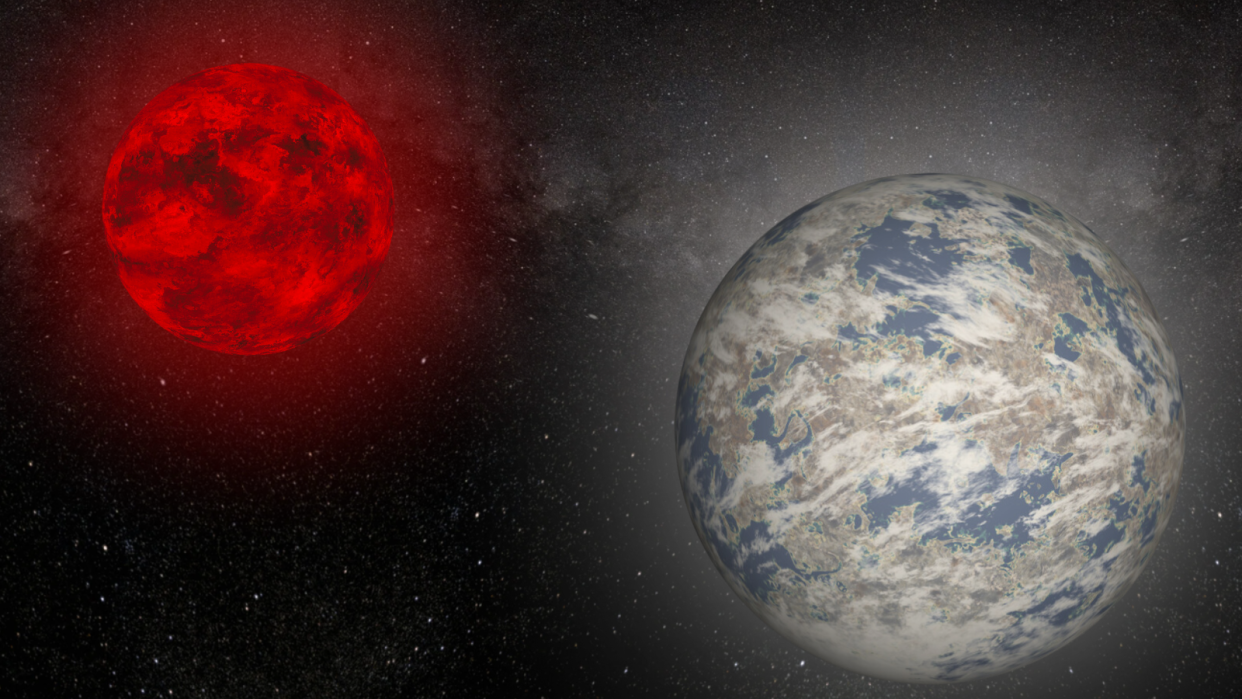
Scientists using a NASA space telescope have discovered a tantalizing world. It's about the size of Earth, sits remarkably close to our solar system, and could be comfortable for life as we know it.
The extrasolar planet, or "exoplanet," named Gliese 12 b, orbits a small and cool red dwarf star located just around 40 light-years from Earth in the constellation Pisces. The exoplanet — which the team found with NASA's Transiting Exoplanet Survey Satellite (TESS) — is estimated to have a width around 1.1 times that of Earth, making it similar to our planet as well as Venus, which is often called our world's solar system "twin."
Gliese 12 b orbits its star, Gliese 12, so closely that its year lasts just 12.8 Earth days. However, because the red dwarf Gliese 12 is just around a quarter of the size of the sun, it is also much cooler than our star. This means that, even though Gliese 12 b is at a distance from its red dwarf parent equivalent to just 7% of the distance between the sun and Earth, it still is in its planetary system's habitable zone. Also known as the "Goldilocks Zone," the habitable zone is the region around a star that is neither too hot nor too cold for planets to host liquid water, a vital ingredient for life as we know it. Though, importantly, the two teams behind the discovery of Gliese 12 b can't yet say for sure if it has an atmosphere. It therefore remains unclear if the world could be habitable, but the researchers have some cautious optimism.
Related: Young 'cotton candy' exoplanet the size of Jupiter may be shrinking into a super-Earth
"The majorly interesting thing is that this is a planet that's really nearby; in fact, it's one of the closest transiting planets to Earth," University College of London scientist Larissa Palethorpe, who co-led the research with University of Southern Queensland astrophysicist Shishir Dholakia, told Space.com. "It's either in the habitable zone of its star or it is right on the edge of it — so, it could be habitable."
If Earth and Venus had a child
Scientists spotted Gliese 12 b as it crossed, or "transited," the face of its parent red dwarf star. These transits cause tiny dips in light that TESS is adept at spotting. Palethorpe added that, when the team went into this project, they didn't know what the orbital period or the size of the planet would be for sure.
"To find it to be such a similar size to Earth was kind of a lovely surprise," she continued. "So that was a really nice thing to be able to nail down, but I think especially knowing that, in terms of habitability, it could lie between Earth and Venus, is really exciting."
Gliese 12 b receives around 85% of the radiation that Venus gets from the sun, but is thought to have a much cooler surface temperature of 107 degrees Fahrenheit (42 degrees Celsius) compared to Venus' surface temperature of 867 degrees Fahrenheit (464 degrees Celsius).
Though Earth and Venus are both in the sun's habitable zone, one can support life and has a favorable atmosphere, while the other is an inhospitable hellscape with temperatures hot enough to melt lead. Studying Gliese 12 b could help us understand why this is the case.
"Gliese 12 b could teach us a lot about how our own solar system has developed as well," Palethorpe added.
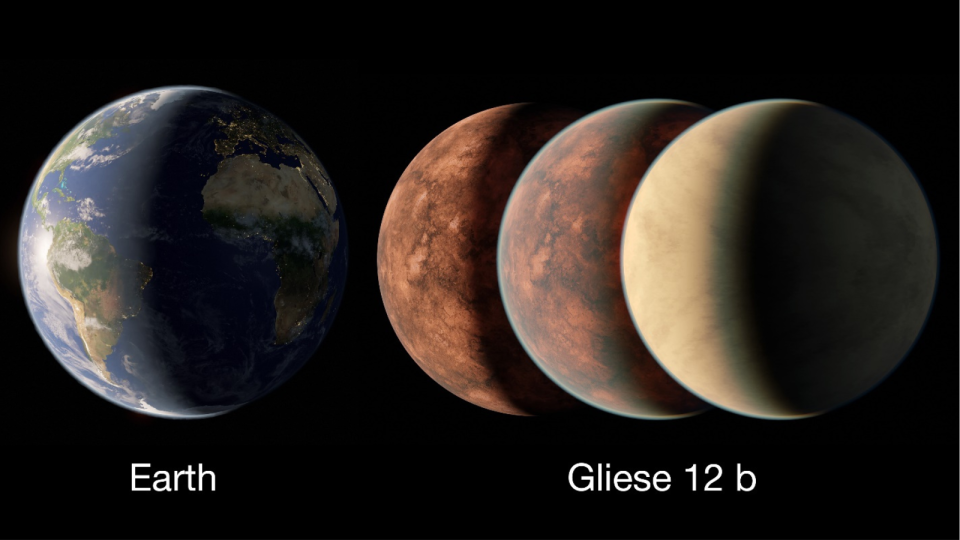
The team will now investigate whether Gliese has an atmosphere — but early indications are that, if it does, that atmosphere would be relatively thin. Perhaps surprisingly, however, the lack of a thick atmosphere is good news for the planet's habitability prospects.
"We know some planets have very thick atmospheres of hydrogen that cover the entire planet. This very thick gas layer is actually bad news for habitability," Palethorpe's fellow UCL researcher, Vincent Van Eylen, told Space.com. "Usually, these planets are two or three times the size of Earth. Gliese 12 b is the actual size of Earth, so it probably doesn't have this very thick atmosphere.
"It could either have no atmosphere, which would not be great for habitability, or it would have this sort of thin atmosphere, kind of like the Earth's."
Still, even if Gliese 12 b does not have an atmosphere, it could still be an important test subject for advancing our search for life elsewhere in the Milky Way. That's because, as a red dwarf, the star it orbits happens to be the most common form of star in our galaxy — yet one we know relatively little about when it comes to red dwarf planetary systems.
Life around red dwarfs
In the Milky Way, red dwarfs comprise the largest family of stars that are still fusing hydrogen to helium in their cores, a process that defines the so-called "main sequence" lifetime of a star. It is estimated that 60% to 70% of the stars in our galaxy are red dwarfs like Gliese 12, and of the 30 stars closest to Earth, at least 20 are red dwarfs.
"It's interesting to know about planets around the small stars, what they might be like, and whether such planets could have life," Van Eylen added.
Officially known as K-type or M-type stars, red dwarfs have between 7.5% and 50% of the mass of the sun. This low mass, relative to the sun, means such stars burn at a lower temperature, reaching only 6,380 degrees Fahrenheit (3,500 degrees Celsius) compared to the 9,900 degrees Fahrenheit (5,500 degrees Celsius) temperature of our star. For instance, Gliese 12 has a surface temperature around 60% that of the sun.
This lower temperature means that dimly shining red dwarfs can exist as main sequence stars for much longer than moderately massive stars like the sun can. Though the sun is expected to live for around 10 billion years, red dwarfs are predicted to have lifetimes tens, or even hundreds, of times this period. Sometimes, that figure can extend to trillions of years. What this means is life would have more time to develop on planets orbiting red dwarfs than it would on planets around larger main-sequence stars.
But, it isn't all good news for the prospects of life on red-dwarf-orbiting exoplanets.
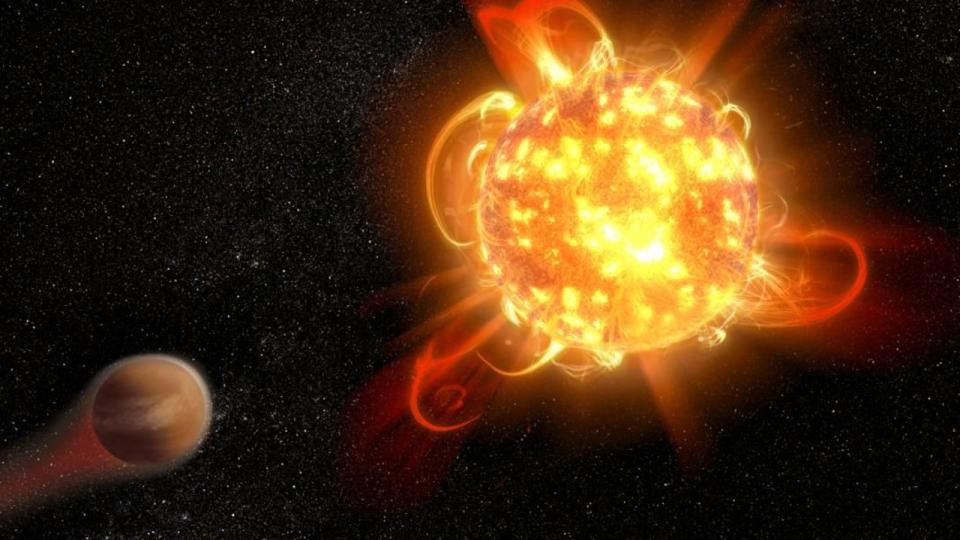
Though they are cooler than the sun in their stellar adulthood, red dwarfs are believed to be much wilder than our star. This class of star is believed to be highly magnetically active, blasting out frequent and powerful flares of high-energy light in the form of X-rays. These X-rays can violently strip the atmosphere of a planet close to a red dwarf.
Additionally, recent research has suggested that even red dwarfs that remain placid for many years can suddenly erupt with superflares 100 to 1,000 times more powerful than the sun's solar flares. These eruptions are more common in the youth of this stellar class and are also capable of stripping atmospheres and boiling away liquid water, even in habitable zones.
At the moment, though, both teams involved in the discovery of Gliese 12 b think the red dwarf in orbit is relatively calm, which could be good news for the exoplanet's chance of possessing an atmosphere.
Red dwarf exoplanets are good TESS targets
The fact that red dwarfs are cooler than stars like the sun and thus their habitable zones are closer to the stars actually makes detecting exoplanets around them a little easier for TESS and its transit method of planet-hunting.
"We have biases towards detecting planets that are close to their host stars essentially, just because they transit more often. When we find planets orbiting red dwarfs because they're smaller stars, the dimming of the transit is bigger," Palethorpe said. "Because red dwarfs are slightly cooler, the habitable zone lies closer to the star than it would for our kind of sun, which means we're more likely to detect planets in the habitable zone with TESS."
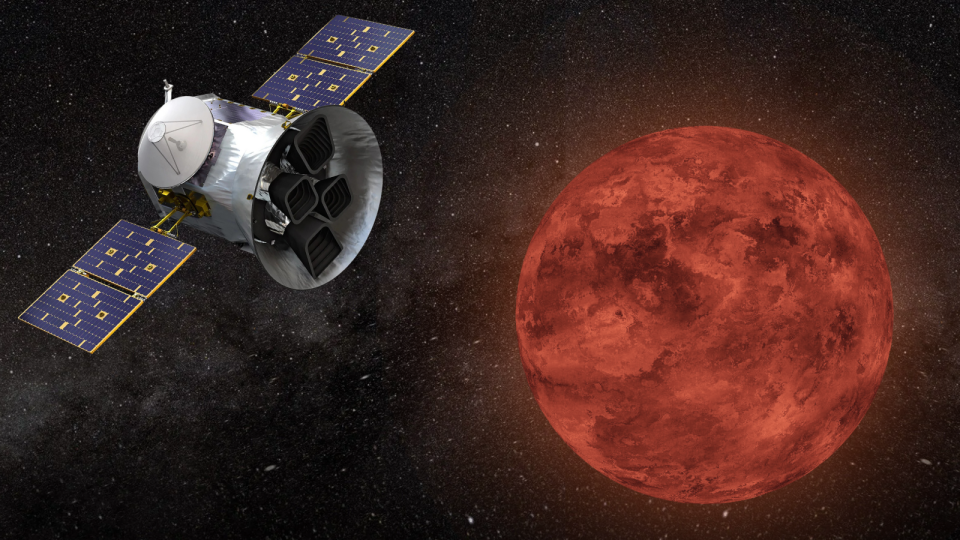
The team will have to turn to other instruments than TESS to investigate this planet further. They will also switch to a different method of exoplanet detection to better define the characteristics of Gliese 12 b. One is called the "radial velocity method," which utilizes the tiny wobbles planets cause in the motion of their stars as they gravitationally tug on those stars.
"I think next really is to nail down the mass of the planet. We are already actively doing that as part of the High Accuracy Radial velocity Planet Searcher for the Northern hemisphere (Harps North) team, which is a radial velocity telescope," Palethorpe said. "Then we've also got another proposal accepted with the European Organization for Astronomical Research in the Southern Hemisphere (ESPRESSO), which is another radial velocity telescope. And so, hopefully, from kind of the radial velocity observations, we will do this."
Palethorpe and Van Eylen also hope to be granted time with the James Webb Space Telescope (JWST) to further investigate the planet's atmosphere. This is possible because as Gliese 12 b transits the face of its star, light passing through its atmosphere will carry the characteristic fingerprints of elements in the atmosphere.
This process is called "transmission spectroscopy," and Gliese 12 b is only one of a handful of temperate Earth-like worlds that are close enough to be examined in this way.
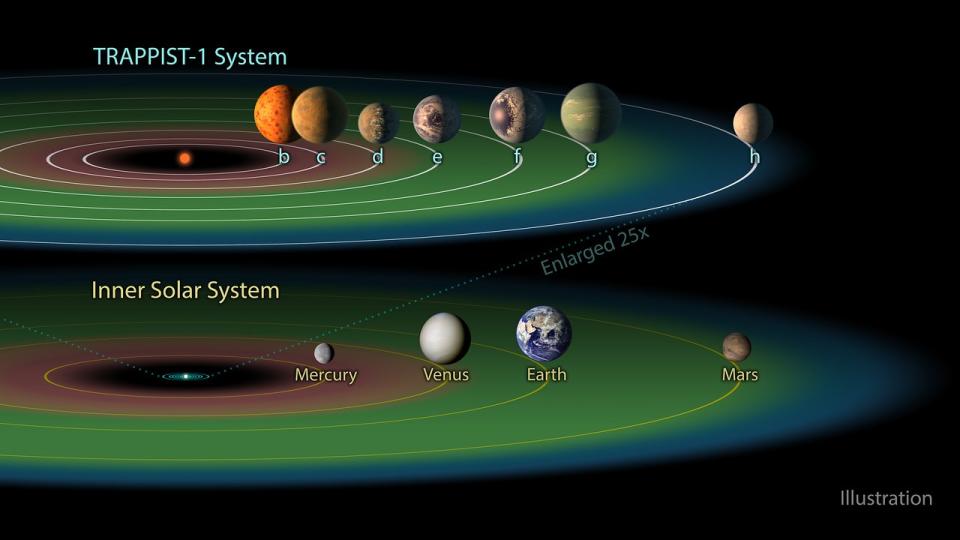
The JWST is currently conducting a similar investigation for the seven Earth-like planets of the TRAPPIST-1 system, located around 40 light-years away. These planets resemble Gliese 12 b in that not only are many of them in the habitable zone of their star, but that star is also a small and cool red dwarf.
"I think with the JWST, we will get at least some clues about the atmosphere of this planet, which would be, I think, the most, the next most exciting thing to do, now that it's been discovered," Van Eylen said.
Related Stories:
— Cotton candy exoplanet is 2nd lightest planet ever found
— Earth-size planet discovered around cool red dwarf star shares its name with a biscuit
— Star blows giant exoplanet's atmosphere away, leaving massive tail in its wake
When it comes to the possibility of Gliese 12 b hosting life, the two scientists are extremely cautious. After all, it is early days for both our understanding of this world and methods that would be capable of detecting signs of life in an exoplanet atmosphere, even one so relatively close as Gliese 12 b.
"I think Gliese 12 b will teach us a lot about life, but we can't say anything for certain. I think it's very exciting, and we should definitely look forward to more research coming out about Gliese 12 b," Palethorpe concluded. "It's not a bad place to start on a hunt for life."
The two teams' research was published on Thursday (May 23) in The Monthly Notices of the Royal Astronomical Society and The Astrophysical Journal Letters.

